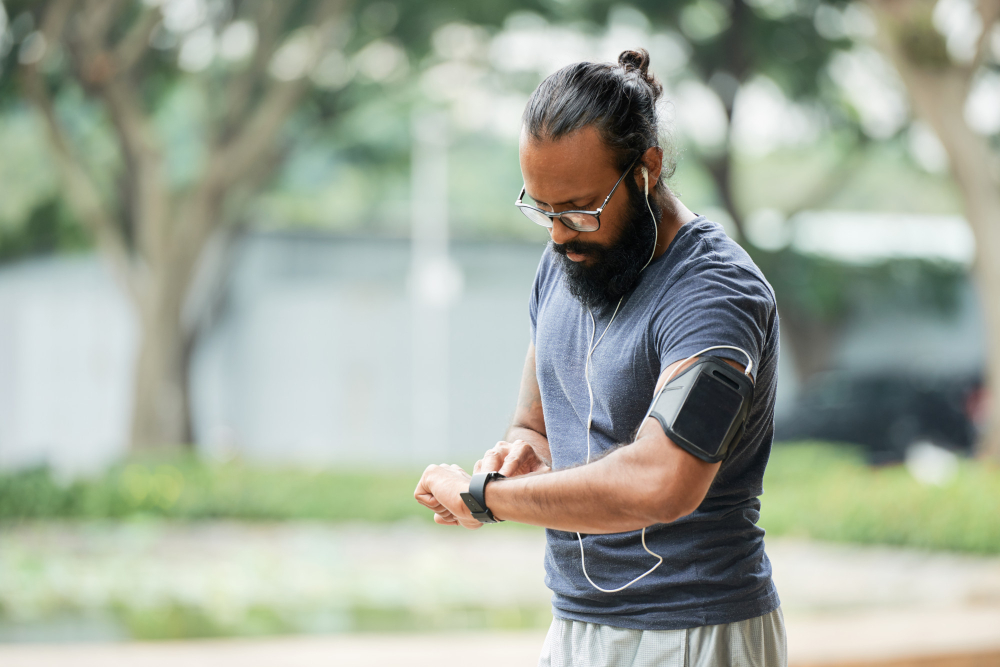Dr. Aravindan Selvaraj

Dr. Aravindan Selvaraj in a Nutshell
Dr. Aravindan, Co-Founder & Executive Director of Kauvery Hospital, is a distinguished leader in the healthcare industry, renowned for his commitment to elderly healthcare and healthcare innovation. As a responsible business leader, Dr. Aravindan has consistently driven advancements that prioritize the well-being of the elderly, ensuring compassionate care and cutting-edge medical solutions. His visionary approach and dedication to excellence have solidified his reputation as a healthcare industry leader, making significant contributions to both patient care and the broader medical community.
What our Customers Say About Us
Products / Services
Orthogeriatrics
Joint Replacement Surgery
Hip Replacement Surgery
Knee Replacement Surgery
Keyhole Surgery
Fracture Treatment
Neck and Pain Management
Sports Injuries
Arthritis
Physiotherapy
Rehabilitation
Geriatric Care
Ligament Reconstruction
Frozen Shoulder
Fall Prevention
Read our Recent Articles
What Is an Accountability Partnership?
 An accountability partnership has been proven to be effective in helping people achieve their goals. This blog explains what an accountability partnership is.
An accountability partnership has been proven to be effective in helping people achieve their goals. This blog explains what an accountability partnership is.
Frequently Asked Questions about our Products / Services
What are the benefits of geriatric care?
As the body ages, it not only becomes weaker, but it is also more susceptible to various diseases and ailments. The evaluation of the patient’s health and the nature of any disorders will be different from the process used for younger people. The medical problems, how they affect health, whether they impact other health issues, and the right course of treatment all call for specialized medical knowledge. A doctor specializing in geriatrics has the training and knowledge to understand, diagnose and treat the medical problems of the elderly most safely and effectively.
How much should you walk after knee replacement?
The relief from chronic pain and continuing knee pain treatment begins once the surgery is over. Within a day or two, a patient is asked to start walking and exercising the new joint. The return to “normal” or the physical state that the patient was in before the knee problems began will progress slowly and steadily. The timeframe will depend on the age and health of the patient and other factors about which a joint replacement specialist will be able to give you detailed and accurate information.
What is the most common injury in sports?
There are a number of common sports injuries – each sport has its own factors that may cause injury. Generally speaking, muscle strains, ligament and tendon tears, joint injuries, and cuts and bruises are the most common. In most cases, rest and common sense will be enough to cure the problem. However, if this does not work, or if the problem or amount of pain is severe, then an orthopedic specialist specializing in treatment for sports injuries should be consulted.
Is joint replacement major surgery?
Joint replacement is major surgery, but it is also commonplace and very safe. The term major surgery often causes fear and anxiety in patients. Modern medicine makes even major procedures much safer than ever before. An orthopedic surgeon will routinely perform joint replacement surgeries and will know exactly how to ensure that the best possible outcomes of the surgeries he performs are achieved. In the case of joint replacement, there is no need to worry about the surgery. Focus instead on the way life will improve after the surgery.
Why do people need a knee replacement?
The knee joint will be worn out or damaged. In such instances, your mobility will be impacted and you will experience pain during resting. If this pain doesn’t alleviate even after other treatments, it is time to go for knee replacement surgery.
How long does it take for an ACL to heal?
The normal timeframe is from 6 to 9 months, but this could be longer or shorter, depending on several factors. The extent of the injury, the overall health of the patient, the type of surgical procedure done and the rehabilitation process all play a part in determining how long full recovery will take. If you require ACL surgery, consult an orthopaedic surgeon who, after doing a detailed examination and reviewing test results and your medical history, will give you a clear picture of the extent of the ACL problem, the treatment options and recovery times and advise you on which will be right for you.
Can fracture be treated without surgery?
Yes, fractures may be treated without surgery in some cases. The right treatment option will depend on the nature of the fracture and the other medical factors like the age of the patient, overall health, other medical problems that could affect the recovery, etc. The decision of whether surgery is required or not can only be taken by an Orthopedician. If a fracture does not receive proper treatment, it can result in lifelong medical problems and pain. Always consult an orthopedic surgeon.
What is the main cause of arthritis?
There are 2 types of arthritis and each has a different cause. In the case of osteoarthritis, the cartilage that cushions the bones at a joint becomes worn away resulting in the bones grinding against each other, causing pain and limiting movement. In the case of rheumatoid arthritis the body’s immune attacks the joint capsule (the membrane that encloses a joint) and makes it swollen and inflamed. Consult an orthopedic surgeon for an accurate diagnosis and advise on the treatment options.
What is osteoporosis
Osteoporosis is a disease characterized by low bone mass and deterioration of bone tissue, leading to an increased risk of fracture. Bone is constantly being remodeled—a process that involves the breakdown and rebuilding of bone tissue. In people with osteoporosis, remodeling occurs too quickly resulting in bones that are weak and more likely to break. Osteoporosis affects men and women of all ages, but it is most commonly diagnosed in postmenopausal women.
What is the most common orthopedic injury?
There is no single most common orthopedic injury. As an orthopedic surgeon with many years of experience behind me, I have seen a number of common injuries that people experience frequently. Which one is most likely or common will depend on a person’s lifestyle and the activities that are a part of his or her life. The common injuries include sprained ankles, foot pain, elbow pain, torn ligaments, damaged tendons, joint dislocations, and stress fractures. I deal with all these and other orthopedic problems every day.
How long does it take to recover from joint replacement surgery?
There is no fixed answer to this question. The recovery period will depend on the joint or joints that are being replaced, the age and overall health of the patient and any other existing co-morbidities. Recovery is also a gradual process with mobility increasing over time. Some action will be possible in a few days while others may take a few weeks.
Being an orthopedic surgeon specializing in joint replacement procedures, I give my patients an accurate recovery projection only after conducting a full examination so I am aware of all the factors that will affect the pace of recovery.
What are orthopedic diseases?
There are over 200 bones in the adult human body. It is the bones that provide the structure to our bodies and also form a protective shell over the internal organs. Many of the bones are connected by flexible joints to allow for free movement. The knee joint is one example. Any disease that affects the bones or joints is an orthopedic disease. Orthopedic ailments can cause pain, affect mobility, result in fractures and affect the quality of life. In the worst case, the condition, if not treated in time, can be fatal. As an orthopedic specialist with decades of experience behind me, I always ensure that my patients are accurately diagnosed so that the most effective treatment can be provided for the orthopedic ailments they face.
Is joint replacement a major surgery?
Joint replacement is a major procedure, but it is also an increasingly common one. As an orthopedic surgeon, I perform these procedures regularly. Advancements in surgical procedures and post-operation care and rehabilitation have made the procedure a safe one with a reduced recovery period. After a detailed diagnosis and evaluation of the results of various tests, I inform my patients of the details of the procedure and the expected recovery so that they are fully aware of the process and uncertainties are removed from their minds.
Why do patients require geriatric care
With advancing age, the functioning of the body is affected. Illnesses and injuries become more common or frequent. That does not mean that the elderly cannot live a full life. The medical care and treatment to be provided to the elderly is a specialized field of medicine and geriatric care entails both treating the illnesses and injuries that seniors are subject to as well as providing preventive medical care to stop the onset of avoidable medical problems. To learn more about the specialized medical needs of the elderly, consult a doctor specializing in geriatric care.
How long does keyhole surgery take to recover?
There is no fixed time frame for this. It depends on the type of surgery that is to be done. Age and other health issues will also affect recovery time. It is true that keyhole surgery is a preferred option in many cases if the health of the patient permits because the recovery time is typically less than with traditional open surgery. However, only a surgeon specializing in keyhole surgery will be able to decide if this is the right option. If so he will then inform the patient about the benefits, including the reduced recovery period.
What are the aims of geriatric care?
The object of geriatric care is to provide the specialized medical care that the elderly need. This is both by way of taking actions to prevent the onset of major health concerns and by providing patients with the treatment they need to recover from illness or injury. The medical needs of the elderly are different from those of younger people because their bodies are more delicate and so require special care and treatment. A specialist in geriatric medicine will be able to tell you more.dr
What is geriatric care?
As we age, our bodies keep changing. After a certain age, which varies slightly from person to person, our metabolism begins to slow down and become more vulnerable to medical problems. Illnesses, diseases, and medications may affect older people differently than younger adults, and older patients may have overlapping health problems that require multiple medications. Geriatrics is the medical specialty that focuses on providing the medical care and treatment that older adults need. Click on this link for more information on geriatric care.
What is best treatment for arthritis in lower back
Arthritis treatment depends on the type of arthritis. For lower back arthritis, treatments may include exercises to stretch and strengthen the back muscles, pain relief medications, and bracing or supports. Surgery may also be recommended for some people.
What is the fastest way to treat arthritis?
The fastest way to treat arthritis depends on the type of arthritis, the severity of the symptoms, and the overall health of the individual. Some common treatment options include:
1. Non-steroidal anti-inflammatory drugs (NSAIDs) such as ibuprofen and naproxen to reduce pain and inflammation
2. Physical therapy and exercise to improve range of motion and muscle strength
3. Heat or cold therapy to reduce pain and inflammation
4. Assistive devices such as canes, walkers, and braces reduce stress on the affected joints
5. Weight management to reduce the stress on the joints
6. Steroid injections to reduce inflammation in the joints
In more severe cases, surgery may be recommended, such as joint replacement or joint repair surgery, which can provide relief of pain and improve mobility.
It's important to work closely with a healthcare professional, such as a rheumatologist, to develop a treatment plan that works best for you and your lifestyle. This may involve a combination of treatments and lifestyle changes to manage the symptoms of arthritis and improve quality of life.
Why is geriatric care important?
Geriatric care is important because the healthcare needs of older adults are often complex and require specialized knowledge and skills. As people age, they are more likely to develop chronic health conditions and disabilities, which can impact their overall health and well-being. Geriatric care focuses on addressing the unique medical, social, and emotional needs of older adults and improving their quality of life. This may include managing chronic conditions, preventing or treating age-related illnesses, addressing mental health issues, promoting healthy lifestyle behaviors, and providing end-of-life care. Geriatric care can help older adults maintain their independence and improve their overall health outcomes, as well as reduce healthcare costs and improve healthcare system efficiency.
Why is geriatric care in high demand?
Geriatric care is in high demand due to the increasing population of older adults. With advances in medicine and healthcare, people are living longer than ever before, and the number of older adults is expected to double by 2050. As people age, they are more likely to develop chronic conditions and complex health issues, requiring specialized medical attention. Geriatric care provides older adults with comprehensive and individualized care that addresses their unique needs and helps them maintain their independence and quality of life. As such, the demand for geriatric care is expected to continue to rise in the coming years.
What are the indications for joint replacement surgery?
Joint replacement surgery is typically recommended for patients who have severe joint pain, stiffness, and mobility limitations that have not responded to non-surgical treatments, such as medications, physical therapy, or lifestyle changes. The most common indications for joint replacement surgery include:
1. Osteoarthritis: This is the most common reason for joint replacement surgery. Osteoarthritis is a degenerative joint disease that occurs when the protective cartilage that cushions the joints wears away, causing bones to rub against each other and leading to pain and stiffness.
2. Rheumatoid arthritis: This is an autoimmune disorder that causes inflammation and damage to the joints, leading to pain, stiffness, and loss of function.
3. Post-traumatic arthritis: This occurs after a joint injury, such as a fracture or dislocation, that damages the cartilage and leads to arthritis.
4. Avascular necrosis: This is a condition in which the blood supply to a joint is disrupted, causing the bone tissue to die and leading to joint damage and pain.
5. Congenital abnormalities: Some people are born with joint abnormalities that can lead to early joint wear and tear, pain, and stiffness.
6. Failed previous joint surgery: In some cases, joint replacement surgery may be recommended if a previous joint surgery was unsuccessful or led to complications.
Overall, joint replacement surgery can significantly improve the quality of life for patients with severe joint pain and dysfunction, allowing them to return to their normal activities with less pain and better mobility.
Which joints are commonly treated with joint replacement surgery?
The joints commonly treated with joint replacement surgery are the hip, knee, and shoulder joints. These procedures aim to relieve pain, improve function, and enhance the quality of life for individuals with joint conditions.
What are the benefits of joint replacement surgery?
Joint replacement surgery offers several benefits for individuals suffering from severe joint pain and reduced mobility. Here are some key advantages:
1. Pain relief: Joint replacement surgery effectively alleviates chronic joint pain caused by conditions like arthritis, injury, or degenerative diseases. By replacing the damaged joint surfaces with artificial implants, the source of pain is eliminated, providing significant pain relief.
2. Improved function and mobility: Joint replacement surgery restores joint function and mobility, allowing individuals to perform daily activities with greater ease. It reduces joint stiffness, increases range of motion, and enables smoother movement, thus improving overall quality of life.
3. Enhanced quality of life: The reduction in pain and improvement in joint function contribute to an enhanced quality of life. Individuals can engage in activities they may have previously avoided due to pain, such as walking, exercising, participating in hobbies, and enjoying social interactions.
4. Increased independence: Joint replacement surgery helps individuals regain independence by reducing their reliance on assistive devices like canes or walkers. With improved joint function, they can perform tasks independently, leading to a greater sense of self-sufficiency.
5. Long-term durability: Artificial joint implants are designed to be durable and long-lasting. While they may require periodic monitoring and maintenance, joint replacements can provide many years of pain-free function, allowing individuals to enjoy an active lifestyle.
6. Psychological well-being: Relief from chronic joint pain and restoration of mobility can have a positive impact on an individual's mental and emotional well-being. Joint replacement surgery often leads to increased confidence, reduced anxiety, and improved overall mental health.
It is important to note that the specific benefits may vary depending on factors such as the individual's overall health, the type of joint being replaced, and the success of the surgical procedure. Consulting with a healthcare professional and discussing the potential benefits and risks is crucial in determining if joint replacement surgery is appropriate for a particular individual.
What are the different types of arthritis and their respective treatment options?
There are several types of arthritis, each with its own unique characteristics and treatment options. Here are some common types of arthritis and their respective arthritis treatment options:
1. Osteoarthritis (OA): Treatment options:
- Pain relievers and anti-inflammatory medications (NSAIDs)
- Physical therapy and exercise to strengthen muscles around the affected joints
- Hot and cold therapy
- Weight management to reduce stress on joints
- Assistive devices like braces or canes
- Corticosteroid injections for pain relief
- Joint realignment or joint replacement surgery in severe cases.
2. Rheumatoid Arthritis (RA): Treatment options:
- Disease-modifying antirheumatic drugs (DMARDs) to slow down disease progression and reduce joint damage
- Biologic medications that target specific parts of the immune system responsible for inflammation
- NSAIDs for pain relief and inflammation control
- Physical therapy and exercise
- Rest and joint protection techniques
- Corticosteroid injections or joint drainage for symptom relief
- Surgery for joint repair or replacement in severe cases.
3. Psoriatic Arthritis (PsA): Treatment options:
- DMARDs and biologic medications for inflammation control
- NSAIDs for pain relief
- Physical therapy and exercise
- Topical treatments for psoriasis skin lesions
- Joint injections for localized pain relief
- Surgery for joint repair or replacement in advanced stages.
4. Gout: Treatment options:
Medications to reduce uric acid levels in the blood (allopurinol, febuxostat)
NSAIDs or colchicine for pain relief during gout attacks
Corticosteroids for severe pain and inflammation
Weight management and dietary changes to reduce purine intake.
5. Ankylosing Spondylitis (AS): Treatment options:
- NSAIDs for pain and inflammation relief
- Physical therapy and exercise to maintain flexibility and posture
- DMARDs or biologic medications for disease management and symptom control
- TNF inhibitors for inflammation control in severe cases
- Surgery for joint replacement or spinal fusion in rare cases.
6. Juvenile Idiopathic Arthritis (JIA): Treatment options:
- NSAIDs for pain relief
- DMARDs or biologic medications for disease management and inflammation control
- Physical therapy and exercise to improve joint function and mobility
- Rest and joint protection techniques.
- It's essential for individuals with arthritis to work closely with their healthcare providers, including rheumatologists and orthopedic
specialists, to determine the most suitable arthritis treatment plan based on the specific type of arthritis, disease severity, and individual needs. Early and appropriate treatment can significantly improve joint function, manage symptoms, and enhance overall quality of life for those with arthritis.
What are the primary goals of arthritis treatment, and how do they differ based on the type and severity of arthritis?
The primary goals of arthritis treatment are to alleviate pain, reduce inflammation, improve joint function, and enhance the patient's overall quality of life. These goals remain relatively consistent across different types of arthritis, but their emphasis and approach can vary based on the specific type and severity of the condition.
1. Pain Relief: Pain management is a fundamental goal for all forms of arthritis. Strategies include medications, physical therapy, joint protection techniques, and lifestyle modifications. Pain relief improves daily functioning and allows patients to engage in activities with greater comfort.
2. Inflammation Control: Reducing inflammation is crucial in managing arthritis to prevent joint damage and progression. Anti-inflammatory medications, disease-modifying drugs, and, in some cases, biologic therapies are employed to suppress the inflammatory response.
3. Improved Joint Function: Enhancing joint mobility and function is essential. Physical therapy and exercises tailored to the type and stage of arthritis help maintain or restore joint flexibility, strength, and range of motion.
4. Minimized Joint Damage: Preventing further joint deterioration is especially important in types of arthritis like rheumatoid arthritis. Aggressive treatment with disease-modifying antirheumatic drugs (DMARDs) and biologics aims to slow or halt joint damage.
5. Individualized Approach: The goals of treatment are personalized based on the type and severity of arthritis. In osteoarthritis, the focus might be on pain management and preserving joint function. In autoimmune arthritis like rheumatoid arthritis, targeting inflammation and preventing joint deformity are central.
6. Maintaining Independence: For all forms of arthritis, maintaining independence and quality of life are overarching goals. This may involve assistive devices, joint protection strategies, and education on managing flares and exacerbations.
7. Psychological Well-being: Addressing the emotional and psychological impact of arthritis is important. Patients with chronic pain might require counseling or support to manage depression, anxiety, and stress.
In summary, while the primary goals of arthritis treatment are consistent, their nuances differ based on the specific type and severity of arthritis. A personalized approach, often involving a multidisciplinary team of healthcare professionals, ensures that patients receive the most effective and appropriate care for their unique condition.
How does physical therapy play a role in orthopedic treatment, and what are the expected benefits for patients?
Physical therapy plays a crucial role in orthopedic treatment by helping patients with musculoskeletal issues regain mobility, strength, and function, while also reducing pain and preventing further injuries. Here's how physical therapy contributes to orthopedic care and its expected benefits for patients:
1. Pain Management: Physical therapists use various techniques, including manual therapy, exercises, and modalities like heat or cold therapy, to alleviate pain. They target the source of the pain and work to reduce discomfort.
2. Improved Mobility and Function: Physical therapy focuses on restoring a patient's range of motion and functional abilities. This is especially important for individuals recovering from surgery, sports injuries, or musculoskeletal conditions like arthritis.
3. Muscle Strengthening: Through customized exercise programs, physical therapists help patients strengthen weakened muscles, which can stabilize joints and prevent further injuries or complications.
4. Balance and Coordination: Patients with orthopedic issues often experience balance and coordination problems. Physical therapists can address these issues, reducing the risk of falls and improving overall mobility.
5. Education and Self-Management: Physical therapists educate patients about their conditions and teach them self-management techniques, including exercises they can do at home. This empowers patients to take an active role in their recovery.
6. Prevention: Physical therapy can also have a preventive aspect. Therapists assess movement patterns and identify risk factors that could lead to future orthopedic problems, allowing for early intervention and injury prevention.
The expected benefits for patients include quicker and more effective recovery, reduced reliance on pain medications, enhanced quality of life, and a reduced risk of future musculoskeletal issues. Physical therapy is a vital component of holistic orthopedic care, promoting optimal healing and long-term well-being.
What are the Benefits of Arthroscopy?
Arthroscopy offers several benefits for both patients and surgeons when compared to traditional open surgery. Some of the key advantages of arthroscopy include:
1. Minimally Invasive: Arthroscopy is a minimally invasive procedure, which means it involves smaller incisions, resulting in less tissue damage, reduced scarring, and generally faster recovery times compared to open surgery.
2. Direct Visualization: Arthroscopy allows surgeons to directly visualize the inside of a joint using a camera (arthroscope). This provides a clearer view of the joint's structures, allowing for more accurate diagnosis and targeted treatment.
3. Diagnostic and Therapeutic: Arthroscopy is not only a diagnostic tool but also a treatment method. In many cases, surgeons can address issues such as damaged cartilage, ligaments, or tendons during the same procedure.
4. Reduced Pain: Due to smaller incisions and less tissue trauma, patients often experience less pain after arthroscopy compared to open surgery. This can lead to reduced pain medication requirements.
5. Shorter Hospital Stay: Many arthroscopic procedures are performed on an outpatient basis, meaning patients can go home the same day, which is more convenient and cost-effective.
6. Quicker Recovery: Arthroscopy typically allows for a faster return to daily activities and work when compared to open surgery, where recovery can be more extended.
7. Lower Infection Risk: The risk of postoperative infections is generally lower in arthroscopic procedures since the incisions are smaller and the surgical area is better contained.
8. Less Blood Loss: Arthroscopy usually results in minimal blood loss during the procedure, reducing the need for blood transfusions.
9. Improved Cosmetic Outcome: The smaller incisions used in arthroscopy lead to less noticeable scarring, which can be particularly important for patients concerned about cosmetic outcomes.
10. Better Outcomes in Some Cases: For specific conditions, such as certain knee and shoulder problems, arthroscopy has been shown to provide superior outcomes compared to traditional open surgery.
It's important to note that the benefits of arthroscopy can vary depending on the specific joint being treated, the condition or injury involved, and the patient's individual circumstances. The effectiveness of the procedure and the speed of recovery may also depend on the skill and experience of the surgeon. Patients should discuss the advantages and potential risks of arthroscopy with their healthcare provider to determine if it is the right option for their particular situation.
What is keyhole surgery?
Keyhole surgery, also known as minimally invasive surgery or laparoscopic surgery, involves performing surgical procedures through small incisions using specialized instruments and a camera. Instead of making a large incision to access the surgical site, keyhole surgery utilizes tiny incisions, typically less than an inch in length.
Here's how it works:
1. Small Incisions: Several small incisions are made near the surgical area, through which trocars (hollow tubes) are inserted.
2. Camera and Instruments: A thin, flexible tube called a laparoscope equipped with a camera and a light source is inserted through one of the trocars. This allows the surgical team to visualize the internal structures on a monitor in real-time.
3. Surgical Procedure: Specialized surgical instruments are passed through the other trocars to perform the necessary surgical steps. Surgeons manipulate these instruments while watching the live video feed from the camera.
Keyhole surgery offers several advantages over traditional open surgery:
Minimal Tissue Damage: Smaller incisions result in less damage to surrounding tissues, reducing pain and accelerating recovery.
Faster Recovery: Patients often experience shorter hospital stays and quicker recoveries compared to open surgery.
Reduced Risk of Infection: Smaller incisions lower the risk of infections and complications.
Improved Cosmetic Outcome: Smaller scars lead to better cosmetic results.
Keyhole surgery is used in various medical fields, including gynecology, orthopedics, urology, and general surgery, for procedures ranging from appendectomies and gallbladder removal to joint surgeries and tumor removals.
What types of joint conditions can be diagnosed and treated using arthroscopy?
Arthroscopy is a versatile procedure for diagnosing and treating numerous joint conditions. It effectively addresses issues in the knee, shoulder, hip, ankle, elbow, and wrist. Common conditions diagnosed and treated through arthroscopy include meniscus tears, ligament injuries (like ACL tears), cartilage damage, and synovitis in the knee. In the shoulder, it targets rotator cuff tears, impingement syndrome, and labral tears. Hip joint problems like labral tears and femoroacetabular impingement benefit from arthroscopic intervention. Ankle instability, cartilage injuries, and chronic ankle issues can be diagnosed and treated through ankle arthroscopy. Similarly, in the elbow and wrist, conditions such as tennis elbow, golfer's elbow, and ligament tears are addressed. Arthroscopy’s minimally invasive nature allows for precise diagnosis and targeted treatment, making it a preferred option for various joint-related ailments.
What types of conditions and injuries do orthopedic surgeons treat?
An Orthopedic surgeon specializes in the diagnosis, treatment, and surgical management of conditions and injuries related to the musculoskeletal system. This system includes bones, joints, ligaments, tendons, muscles, and nerves. Some common conditions and injuries treated by orthopedic surgeons include:
1. Fractures and Dislocations: Orthopedic surgeons address broken bones and joint dislocations resulting from trauma or accidents.
2. Arthritis: Both inflammatory arthritis (e.g., rheumatoid arthritis) and degenerative arthritis (e.g., osteoarthritis) can affect joints, leading to pain, swelling, and stiffness.
3. Sports Injuries: Orthopedic surgeons manage injuries incurred during sports activities, including ligament tears (e.g., ACL tears), muscle strains, and stress fractures.
4. Tendon and Ligament Injuries: Conditions like tendonitis or ligament sprains and tears often require orthopedic intervention.
5. Spinal Conditions: Orthopedic surgeons treat spinal disorders such as herniated discs, spinal stenosis, and deformities like scoliosis.
6. Joint Conditions: Conditions like bursitis, synovitis, and cartilage injuries can affect joints and require orthopedic evaluation.
7. Muscle and Soft Tissue Injuries: Orthopedic surgeons address injuries to muscles, tendons, and other soft tissues, including rotator cuff tears and Achilles tendon ruptures.
8. Carpal Tunnel Syndrome: Orthopedic surgeons may treat nerve compression conditions, such as carpal tunnel syndrome, affecting the hand and wrist.
9. Orthopedic Trauma: Orthopedic surgeons are often involved in the treatment of traumatic injuries, including complex fractures and injuries requiring surgical reconstruction.
10. Congenital Deformities: Orthopedic surgeons may manage conditions present from birth, such as clubfoot or hip dysplasia.
11. Joint Replacement: Orthopedic surgeons perform joint replacement surgeries, including hip and knee replacements, to address severe arthritis or joint damage.
12. Foot and Ankle Conditions: Orthopedic surgeons treat conditions like plantar fasciitis, bunions, and ankle instability.
Orthopedic surgeons utilize a range of treatments, from conservative approaches like physical therapy and medications to surgical interventions when necessary. The goal is to alleviate pain, improve function, and enhance the overall quality of life for individuals with musculoskeletal conditions and injuries. Patients may be referred to orthopedic surgeons by primary care physicians, other specialists, or through emergency care in the case of trauma.
How do patients benefit from consulting with an orthopedic surgeon for musculoskeletal issues compared to other medical professionals?
Consulting with an orthopedic surgeon for musculoskeletal issues offers several unique benefits compared to other medical professionals:
1. Specialized expertise: Orthopedic surgeons are highly trained specialists with extensive knowledge and experience in diagnosing and treating musculoskeletal conditions. They have specific expertise in orthopedic surgery techniques and interventions tailored to address a wide range of musculoskeletal problems.
2. Comprehensive evaluation: Orthopedic surgeons conduct thorough evaluations, including medical history, physical examination, and diagnostic imaging studies, to accurately diagnose musculoskeletal conditions and develop personalized treatment plans.
3. Surgical expertise: If surgery is necessary to treat the musculoskeletal issue, orthopedic surgeons are uniquely qualified to perform a wide range of surgical procedures, from minimally invasive arthroscopic surgeries to complex joint replacements and spinal surgeries.
4. Conservative treatment options: Orthopedic surgeons also offer non-surgical treatment options, including medications, injections, physical therapy, and other conservative modalities, to manage musculoskeletal conditions and optimize outcomes.
5. Continuity of care: Orthopedic surgeons provide ongoing care throughout the treatment process, from initial evaluation and diagnosis through post-operative rehabilitation and follow-up care, ensuring continuity and coordination of care for patients.
6. Patient education and empowerment: Orthopedic surgeons educate patients about their condition, treatment options, and expected outcomes, empowering them to make informed decisions about their care and actively participate in their treatment plan.
Overall, consulting with an orthopedic surgeon for musculoskeletal issues offers patients access to specialized expertise, comprehensive evaluation, a wide range of treatment options, surgical expertise when needed, continuity of care, and patient-centered education and empowerment, all of which contribute to improved outcomes and quality of life for individuals with musculoskeletal conditions.
What is ligament reconstruction?
Ligament reconstruction is a surgical procedure performed to repair or replace a torn or damaged ligament, typically in a joint. Ligaments are tough bands of connective tissue that connect bones to other bones and provide stability to joints. When a ligament is torn or ruptured due to injury or trauma, it can result in joint instability, pain, and limited range of motion.
During ligament reconstruction, the surgeon typically makes an incision near the affected joint and accesses the torn ligament. Depending on the severity of the injury, the torn ligament may be repaired using sutures or stitches to reconnect the torn ends. In cases where the ligament is severely damaged or cannot be repaired, it may be necessary to replace the ligament with a graft, which may be harvested from the patient's own tissue (autograft) or obtained from a donor (allograft).
Following ligament reconstruction surgery, rehabilitation and physical therapy are crucial for restoring strength, flexibility, and function to the joint. The goal of ligament reconstruction is to stabilize the joint, alleviate pain, and improve overall function, allowing the individual to return to their normal activities and sports participation with reduced risk of re-injury.
How soon after an injury should ligament reconstruction surgery be performed?
The timing of ligament reconstruction surgery depends on various factors, including the type and severity of the injury, the specific ligament involved, the individual's overall health, and the presence of associated injuries. In general, ligament reconstruction surgery is typically performed once the initial swelling and inflammation have subsided, and the patient's overall condition is stable.
For some injuries, surgery may be performed relatively soon after the injury, especially if there is significant instability or the injury is causing ongoing functional limitations. However, in other cases, surgery may be delayed to allow for initial rehabilitation and to optimize the surgical outcome.
It's essential to consult with an orthopedic surgeon specializing in ligament injuries to determine the most appropriate timing for surgery based on the specific circumstances of the injury and the individual patient's needs.
What is ligament reconstruction surgery, and when is it typically recommended?
Ligament reconstruction surgery is a procedure performed to repair or replace a damaged ligament in the body. Ligaments are tough bands of connective tissue that connect bones to other bones and provide stability to joints. When a ligament is torn or severely injured, it can lead to joint instability, pain, and limited function.
Ligament reconstruction surgery is typically recommended when conservative treatments such as rest, physical therapy, and bracing fail to alleviate symptoms or restore normal function. It may be indicated for injuries to ligaments in various joints, including the knee (such as anterior cruciate ligament tears), ankle, shoulder, or elbow.
During the procedure, the surgeon may repair the torn ligament using sutures or grafts from other tissues, such as tendons or cadaver tissue, to reconstruct the ligament and restore stability to the joint. The goal of ligament reconstruction surgery is to improve joint function, reduce pain, and prevent further damage to surrounding structures.
Rehabilitation following surgery is crucial to ensure proper healing and optimal outcomes. Physical therapy plays a vital role in restoring strength, flexibility, and range of motion to the affected joint, helping patients regain function and return to their normal activities. Overall, ligament reconstruction surgery is recommended when conservative treatments have been exhausted, and restoring joint stability is essential for maintaining an active lifestyle and preventing further injury.
What should I expect during the rehabilitation process after ligament reconstruction?
The rehabilitation process after ligament reconstruction is a structured and gradual program designed to restore strength, stability, and function to the affected joint. Initially, the focus is on managing pain and swelling, with rest, ice, compression, and elevation being key components. Early movement is encouraged to prevent stiffness and improve circulation, but activities are carefully controlled to avoid stressing the new ligament.
As healing progresses, physical therapy becomes more intensive. The program typically includes range-of-motion exercises, gradually increasing in difficulty to restore flexibility. Strengthening exercises target the muscles around the joint to provide better support and enhance stability. Balance and proprioception training are also crucial, helping to retrain the body's sense of joint position to prevent future injuries.
The timeline for rehabilitation varies, often spanning several months. Consistency and adherence to the therapy plan are vital for optimal recovery. Regular follow-ups with the healthcare team ensure the ligament heals correctly and the patient regains full function.
What are the signs that I need ligament reconstruction?
Signs that you may need ligament reconstruction typically include persistent instability and weakness in the affected joint, especially after conservative treatments like physical therapy and bracing have failed. If you experience frequent episodes of your knee giving way or feeling unstable, particularly during physical activities, it may indicate significant ligament damage that requires surgical intervention.
Chronic pain and swelling that do not subside with rest and medication are also key indicators. Limited range of motion and difficulty performing daily activities, such as walking, climbing stairs, or playing sports, suggest that the ligament injury is severe. Additionally, if imaging tests like MRI reveal a complete tear or severe damage to the ligament, ligament reconstruction may be necessary to restore joint stability and function.
Consulting an orthopedic specialist can help determine the extent of the injury and the most appropriate treatment plan. Ligament reconstruction can significantly improve joint stability, reduce pain, and enhance overall quality of life.
What are the symptoms of a joint dislocation?
Joint dislocation occurs when the bones in a joint are forced out of their normal positions, often due to trauma or a sudden impact. The symptoms of a joint dislocation are typically immediate and severe. The most prominent sign is intense pain at the affected joint, which can be exacerbated by movement. The joint may appear visibly deformed or out of place, with swelling and bruising developing rapidly around the area. Additionally, there may be a loss of function or an inability to move the joint normally, accompanied by a sensation of instability. In some cases, the surrounding nerves or blood vessels may be compressed or damaged, leading to numbness, tingling, or a feeling of coldness in the affected limb. Prompt medical attention is crucial to realign the dislocated joint and prevent further complications, such as damage to the ligaments, tendons, or muscles surrounding the joint.
What is the difference between a joint dislocation and a joint sprain?
A joint dislocation and a joint sprain are both injuries involving the ligaments and joints, but they differ in severity and nature. A joint dislocation occurs when the bones that make up a joint are forced out of their normal alignment. This injury is usually caused by trauma, such as a fall or a hard blow, and can result in severe pain, swelling, and an inability to move the joint. A dislocation often requires immediate medical attention to reposition the bones and may need immobilization or physical therapy for recovery.
On the other hand, a joint sprain occurs when the ligaments, which connect bones, are overstretched or torn. Sprains are typically caused by a sudden twist or impact, common in activities like running or jumping. The severity of a sprain can range from mild, with slight pain and swelling, to severe, where the ligament is completely torn, requiring longer recovery. Unlike dislocations, sprains usually do not involve bone misalignment.
Can sports injuries lead to long-term health issues?
Yes, sports injuries can lead to long-term health issues if they are not properly treated or if the individual returns to activity too soon. Common long-term effects include chronic pain, arthritis, and reduced mobility, particularly in injuries involving joints such as the knees, ankles, and shoulders. For example, an untreated ligament tear can result in joint instability, leading to further injuries and long-term damage.
Recurrent injuries are also a concern, as athletes may develop compensatory movement patterns that place extra stress on other areas of the body. Overuse injuries, such as tendonitis or stress fractures, can lead to chronic conditions if the underlying causes, such as training errors or inadequate recovery, are not addressed.
Early diagnosis, proper rehabilitation, and adherence to preventive measures can help mitigate these risks. Athletes should work closely with healthcare professionals to ensure a safe return to their sport and maintain long-term health.
What should I do immediately after a sports injury?
Immediately after sustaining sports injuries, taking the right steps can prevent further damage and speed up recovery. The R.I.C.E. method—Rest, Ice, Compression, and Elevation—is a widely recommended initial response. Rest the injured area to avoid putting pressure on it, which could worsen the injury. Applying ice for 15-20 minutes every hour helps reduce swelling and numbs the area, alleviating pain. Wrapping the injury with a compression bandage provides support and limits swelling, but it should be snug, not tight enough to cut off circulation. Elevating the injured area above heart level also aids in reducing swelling by promoting fluid drainage.
Seeking medical attention is essential if there’s significant pain, visible deformity, or if symptoms persist. Early consultation with a healthcare provider can prevent long-term complications and expedite recovery. For athletes, adhering to these steps and avoiding rushing back into activity is key to effectively managing sports injuries.
What are the risks and complications of ligament reconstruction?
Ligament reconstruction, often performed to repair torn ligaments, is a common surgical procedure, but it carries certain risks and complications. One of the most common risks is infection at the surgical site, which can delay healing and require further treatment. There is also a possibility of blood clots forming in the legs (deep vein thrombosis) after surgery, which can travel to the lungs, posing a life-threatening condition known as a pulmonary embolism.
Nerve damage is another concern, as nearby nerves can be inadvertently injured during the procedure, leading to numbness or weakness in the affected area. Additionally, there’s a risk that the graft used to replace the torn ligament may fail or stretch over time, potentially requiring revision surgery. Scar tissue formation and stiffness can limit the joint’s range of motion, which can hinder rehabilitation. Proper post-surgery care, rehabilitation, and following medical advice are essential to minimize these risks and promote recovery.
Can ligament reconstruction prevent future joint injuries?
Ligament reconstruction can help prevent future joint injuries, especially for individuals who have experienced severe ligament tears, such as those in the knee (e.g., ACL tears) or other joints. This surgical procedure involves replacing a torn or damaged ligament with a tendon from another part of the body or from a donor. By restoring the joint's stability, ligament reconstruction can reduce the risk of further damage or instability that might occur with normal movement or physical activity.
However, while ligament reconstruction can significantly improve joint function and stability, it doesn't entirely eliminate the risk of future injuries. Proper rehabilitation and physical therapy are crucial to ensure the joint regains full strength, range of motion, and flexibility. Additionally, lifestyle changes like proper training, technique, and wearing protective gear can help prevent re-injury. Ultimately, ligament reconstruction provides an essential foundation for recovery, but long-term injury prevention requires ongoing care and precaution.
What role do changemakers play in transforming healthcare systems?
Changemakers play a crucial role in transforming healthcare systems by identifying inefficiencies, advocating for reforms, and implementing innovative solutions. They challenge outdated practices, introduce new medical technologies, and improve patient care through research and policy changes. Their contributions lead to more accessible, affordable, and efficient healthcare services that benefit communities worldwide.
Changemakers in Healthcare include doctors developing life-saving treatments, nurses enhancing patient experiences, and researchers discovering new ways to combat diseases. Healthcare administrators and policymakers also drive change by improving hospital management, streamlining processes, and ensuring fair distribution of medical resources. Additionally, community health workers and patient advocates work on the ground to raise awareness and address healthcare disparities.
By pushing for advancements in medicine, telehealth, and preventive care, changemakers help shape a future where quality healthcare is available to all. Their dedication and innovative thinking drive lasting improvements, making healthcare systems more responsive to the needs of people.
What is healthcare innovation and why is it important?
Healthcare innovation refers to the development and implementation of new technologies, treatments, and strategies that improve patient care, enhance efficiency, and make healthcare more accessible. It includes advancements in medical devices, artificial intelligence, telemedicine, personalized medicine, and digital health solutions. These innovations help address pressing healthcare challenges, such as rising costs, disease prevention, and treatment gaps.
The importance of healthcare innovation lies in its ability to improve health outcomes and quality of life. By integrating cutting-edge technologies like AI-driven diagnostics and wearable health monitors, doctors can detect diseases earlier and provide more effective treatments. Innovations such as telehealth expand access to care, particularly for remote and underserved populations.
Additionally, breakthroughs in biotechnology and pharmaceuticals lead to better therapies for chronic and life-threatening conditions. Investing in healthcare innovation ensures a more efficient, patient-centered system, reducing healthcare disparities and ultimately creating a healthier global population.
What are the latest technological advancements driving healthcare innovation?
Recent technological advancements are significantly propelling Healthcare Innovation, transforming patient care and medical practices. Artificial Intelligence (AI) stands at the forefront, enhancing diagnostic accuracy, streamlining administrative tasks, and enabling personalized treatment plans. AI-powered tools assist clinicians in early disease detection and decision-making processes.
Telemedicine has revolutionized access to healthcare, especially in remote areas, by facilitating virtual consultations and continuous patient monitoring. This approach not only improves patient engagement but also reduces the burden on healthcare facilities.
Wearable health devices and remote monitoring technologies allow for real-time tracking of vital signs, aiding in the management of chronic conditions and early intervention. These tools empower patients to take an active role in their health.
Advancements in genomics and precision medicine are enabling treatments tailored to individual genetic profiles, improving efficacy and reducing adverse effects. Additionally, the integration of blockchain technology ensures secure and transparent handling of medical records, enhancing data integrity and patient privacy.
Collectively, these innovations are reshaping the healthcare landscape, leading to more efficient, accessible, and personalized care.
What are the five key social determinants of health?
When we look at what truly shapes a person’s health, five key areas stand out, each influencing well-being in powerful ways. First is economic stability—having steady income, job security, and the ability to afford essentials like housing and healthcare. Without that, staying healthy becomes much harder. Second is education access and quality, which affects everything from health literacy to long-term earning potential. Then there’s healthcare access and quality, because even the best medical advances don’t help if people can’t reach or afford care. Neighborhood and built environment is another major factor—clean air, safe streets, and access to fresh food make a big difference. Finally, social and community context matters too; strong support networks and protection from discrimination can greatly affect mental and physical health. Understanding how these five areas influence outcomes is key to using social determinants of health to create real, lasting change across communities.
 People across our country suffer from vitamin D deficiency. With deficiency playing a role in the incidence of conditions like rickets, osteoporosis, etc. it is essential that it be identified and treated. The blog explains this underplayed deficiency.
People across our country suffer from vitamin D deficiency. With deficiency playing a role in the incidence of conditions like rickets, osteoporosis, etc. it is essential that it be identified and treated. The blog explains this underplayed deficiency.


 Overview: A career switch can be unnerving. “Should you, or shouldn’t you?” is the big question. The blog explains the many aspects to consider before going in for a career change.
Overview: A career switch can be unnerving. “Should you, or shouldn’t you?” is the big question. The blog explains the many aspects to consider before going in for a career change. Climate change is nothing new to us. The term has been bandied about for many years now. But we have been living with it all this while and it hasn’t visibly affected you or me. Is it really as bad as they say it is? Yes, it is. Let’s start by understanding what climate change is.
Climate change is nothing new to us. The term has been bandied about for many years now. But we have been living with it all this while and it hasn’t visibly affected you or me. Is it really as bad as they say it is? Yes, it is. Let’s start by understanding what climate change is.
 Overview: Wearables are changing the healthcare landscape by offering numerous benefits. But they are not without their limitations. Read the blog to know more.
Overview: Wearables are changing the healthcare landscape by offering numerous benefits. But they are not without their limitations. Read the blog to know more. Overview: Multitasking has always been lauded as a positive attribute but is this truly so? The truth is multitasking has both pros and cons and this blog takes a look at both.
Overview: Multitasking has always been lauded as a positive attribute but is this truly so? The truth is multitasking has both pros and cons and this blog takes a look at both.


 Air pollution is a pressing issue that often dominates the news cycle. Unfortunately, we’ve become so accustomed to hearing about it that its gravity often fails to sink in.
Air pollution is a pressing issue that often dominates the news cycle. Unfortunately, we’ve become so accustomed to hearing about it that its gravity often fails to sink in.  Grief is a natural emotional response to a loss. While often grief is associated with losing a loved one, it can also happen with other forms of loss like divorce, moving away from home, etc.
Grief is a natural emotional response to a loss. While often grief is associated with losing a loved one, it can also happen with other forms of loss like divorce, moving away from home, etc.